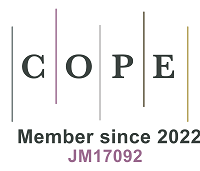Perspective on neonicotinoid insecticides in human exposure and risk assessment
Abstract
This perspective presents first-hand research insights into the pervasive environmental distribution of neonicotinoid insecticides (NEOs) and their consequent human exposure. Our findings reveal widespread NEO detection across human biological matrices, indicating potential health risks and highlighting critical gaps in current risk assessment paradigms. We identify an urgent need for longitudinal epidemiological studies, particularly focusing on vulnerable populations, to comprehensively assess NEO-related health outcomes. These scientific insights should inform evidence-based policy reforms and risk management strategies to effectively protect both public health and environmental integrity.
Keywords
UBIQUITY AND DETECTION IN HUMANS
Neonicotinoid insecticides (NEOs) have been extensively detected in a variety of environmental matrices, including soil, aquatic systems, particulate matter, plant pollen, floral nectar, honey, and foodstuffs[1-6]. Their widespread presence indicates the potential routes of human exposure, including ingestion, inhalation, and dermal absorption. NEOs have been detected in human urine samples, and exposure levels were found to vary significantly according to geographic region, seasons, and demographic variables[7-9]. Moreover, NEO metabolites have been observed in human samples more frequently and at higher concentrations than their parent compounds[7,9-11], highlighting the necessity to incorporate metabolite assessment in risk evaluations. The prevalence of these metabolites suggests that current exposure assessments, which are predominantly based on short-term urinalysis, may significantly underestimate the actual extent of human exposure. Furthermore, the toxicological profiles of both NEOs and their metabolites warrant further investigation, as they may exhibit distinct toxicokinetic behaviors and exert divergent health impacts[12-17].
NEO exposure and the associated health risks in susceptible populations, particularly children and pregnant women, warrant further investigation. Among children, NEO exposure can disrupt neurodevelopmental processes[18-22], including the need to assess the chronic, low-level exposure effects in this population. The relationship between prenatal NEO exposure and perinatal outcomes has been investigated, with emerging evidence suggesting a correlation between maternal NEO exposure and adverse birth outcomes, including an elevated incidence of congenital heart disease in neonates[13,22-27]. These insights underscore the critical need to investigate the environmental dynamics and potential health ramifications of NEOs, with a particular emphasis on vulnerable populations.
The global ubiquity of NEOs and their detection in human biomonitoring studies further indicates the need for a comprehensive understanding of their environmental dynamics and potential health implications[7,28-33]. This imperative extends to the development of mitigation strategies designed to reduce exposure and associated risks. The unique vulnerabilities and specific needs of children and pregnant women, who may exhibit distinct toxicokinetic profiles and experience health effects that differ from those observed in the general population[21,22,34], must be considered. The urgency for large-scale epidemiological investigations to delineate potential health outcomes associated with NEO exposure is paramount, particularly among these high-risk cohorts. Achieving a profound understanding of the toxicokinetics and toxicodynamics of NEOs in these susceptible populations is essential for conducting accurate health risk assessments.
HEALTH RISKS AND ADVERSE EFFECTS
NEOs may pose health risks to humans, including neurological toxicity, diabetes, and other unintended effects on mammals[35,36]. In humans, sub-lethal effects manifest as nausea, vomiting, headaches, and diarrhea. Emerging evidence suggests that NEOs may pose significant health risks to both mammals and humans, including neurotoxicity, immunotoxicity, hepatotoxicity, nephrotoxicity, and reproductive toxicity[35-37]. Further research into the toxicity of NEOs and their metabolites is warranted, as current exposure assessments predominantly rely on short-term urinary biomarkers.
NEOs are recognized for their neurotoxic properties, specifically targeting the nicotinic acetylcholine receptor (nAChR), which plays a pivotal role in neural signaling[3,38,39]. nAChRs are also present on immune cells, thereby potentially influencing immune responses[3,38,39]. Emerging evidence suggests that chronic exposure to NEOs may disrupt neurodevelopmental processes, particularly in children, leading to potential cognitive and behavioral deficits[29,40,41]. For instance, a study by Wang et al. reported a significant association between prenatal NEO exposure and delayed cognitive development in 2-year-old children[29]. These findings indicate the critical need for long-term studies to assess the neurodevelopmental impacts of NEO exposure across different life stages.
The immune-toxicological effects of NEOs are a significant concern, as they may perturb the immune system’s normal functions, increasing the risk of infections and diseases[39]. Recent research has shown that exposure to NEOs can lead to immune dysregulation, characterized by altered cytokine profiles and increased susceptibility to infections[42]. For example, Walderdorff et al. demonstrated that imidacloprid at higher concentrations significantly reduced phagocytic activity in lipopolysaccharide-activated human macrophages after 24 h of exposure[43]. These findings indicate the importance of incorporating immunotoxicity endpoints in future epidemiological studies.
The hepatotoxic and nephrotoxic potential of NEOs implies possible damage to the liver and kidneys, with serious health implications, such as compromised detoxification and excretory processes[44,45]. Studies have reported elevated levels of liver enzymes and kidney function markers in individuals chronically exposed to NEOs, indicating potential organ damage[46,47]. Godbole et al. found that detectable levels of neonicotinoid metabolites in urine were associated with decreased liver enzyme levels and hepatic steatosis index (HSI) in U.S. adults, suggesting potential hepatotoxic effects[46]. These findings highlight the need for comprehensive assessments of liver and kidney function in populations exposed to NEOs.
Reproductive toxicity associated with NEOs suggests the possibility of hormonal disruption and interference with reproductive processes, which could lead to fertility problems[48-50]. Prenatal exposure to NEOs may be linked to adverse birth outcomes, including congenital heart disease and low birth weight[23-25]. A prospective cohort study by Pan et al. reported a higher incidence of congenital anomalies in neonates born to mothers with high NEO exposure during pregnancy[25]. Thus, further research on the reproductive and developmental impacts of NEOs is needed, particularly in vulnerable populations such as pregnant women and children.
The environmental persistence and human biomonitoring of NEOs and their metabolites underscore the imperative for a thorough comprehension of their toxicokinetics and health impacts. Since metabolites are detected at higher levels than parent compounds in human matrices, such as urine[7,9], metabolites should be considered in risk assessments. Metabolites may exhibit distinct toxicokinetic profiles and health effects compared to their parent compounds, thereby complicating the evaluation of health risks associated with NEO exposure.
The complexity of health risks posed by NEOs is exacerbated by their potential for environmental bioaccumulation and biomagnification within the food chain, resulting in chronic, low-dose human exposure. Such exposure can precipitate latent health effects, which may manifest with serious long-term consequences. Consequently, long-term epidemiological studies should be undertaken to elucidate the potential health outcomes associated with NEO exposure and devise strategies for risk mitigation.
RISK ASSESSMENT METHODOLOGIES
NEO risk assessment involves evaluating exposure levels and comparing them with established reference doses. The relative potency factor (RPF) method is widely used to estimate the daily intake (EDI) of NEOs, which is then compared with the chronic reference dose to assess potential health risks[51]. This approach enables the comparative assessment of the relative toxicity of various NEOs, taking into account the potency of each compound. However, since current risk assessments are predominantly focused on short-term exposure scenarios, long-term monitoring utilizing biomaterials such as hair and nails is needed[52]. These biomaterials provide a more comprehensive perspective on exposure chronology, as they can sequester substances over extended periods, thereby reflecting chronic exposure patterns.
Comprehensive, large-scale epidemiological studies are imperative for elucidating the potential health outcomes associated with NEO exposure. Such studies are pivotal for establishing robust correlations between exposure levels and health effects while accounting for diverse factors, including demographics, geographical location, and lifestyle habits[11,16,17,31,32,53,54]. The Nemerow Index method, a comprehensive approach for quantifying the overall NEO pollution levels in the soil of urban park green spaces, has been employed to assess the cumulative exposure risks across different populations[55]. This method provides a comprehensive assessment of the risks associated with NEO exposure by integrating the effects of multiple pollutants.
FUTURE PERSPECTIVES
The pervasive presence of NEOs in the environment and their detection in human matrices underscore the imperative for a comprehensive risk assessment framework that encompasses both acute and chronic exposure routes. The current exposure assessments for NEOs are often based on short-term biomonitoring data, which may significantly underestimate the true extent of human exposure. A study by Song et al. reported that NEO metabolites were detected in human urine samples at higher frequencies and concentrations than their parent compounds, suggesting that reliance on short-term urinalysis alone may miss a substantial portion of chronic exposure[7]. Specifically, the study found that the concentration of NEO metabolites in urine samples varied significantly across different regions and demographic groups. Future research should focus on expanding our understanding of the long-term health effects, developing more sensitive detection methods, and establishing international standards for safe exposure levels. Moreover, large-scale epidemiological studies are urgently needed to elucidate potential health outcomes associated with NEO exposure and inform evidence-based policy decisions that balance agricultural requirements with environmental health.
In the context of long-term health effects, a full lifecycle study approach is essential for elucidating the chronic impacts of NEOs on human health[56]. This approach involves examining exposure from prenatal stages through adulthood and assessing the developmental, reproductive, and carcinogenic effects of NEOs over time. Such studies would provide invaluable insight into the cumulative and delayed effects of these insecticides on human health, which are currently poorly understood.
The integration of organoid technology into NEO research represents a promising avenue for advancing our understanding of the mechanisms by which NEOs exert their toxic effects[57,58]. Organoids, which are three-dimensional cell cultures that mimic the structure and function of human organs[57,58], offer a cutting-edge tool for studying the direct effects of NEOs on human tissues. These models can simulate specific organ responses to NEO exposure, providing a platform for the high-throughput screening of potential adverse effects and for testing the efficacy of mitigation strategies.
The development of more sensitive detection methods is crucial for accurately quantifying NEO levels in various environmental and biological samples. Advances in analytical chemistry, such as mass spectrometry and biosensors, can enhance the sensitivity and specificity of NEO detection, thereby enabling the monitoring of even trace amounts of these insecticides in complex matrices.
Establishing international standards for safe exposure levels requires a concerted global effort. Collaborative research programs among countries can harmonize risk assessment methodologies and establish exposure limits based on the best available scientific evidence. This would facilitate the development of harmonized regulations that protect public health while accounting for the diverse agricultural practices and environmental conditions across different regions.
In summary, assessing the risks posed by neonicotinoids (NEOs) requires a multidisciplinary approach combining toxicology, epidemiology, and environmental science, given their ubiquitous presence and potential health impacts. To effectively evaluate population exposure and associated risks, future research should prioritize: (1) longitudinal health studies; (2) implementation of organoid models; (3) development of advanced detection methods; and (4) establishment of global exposure guidelines to protect both human health and the environment.
DECLARATIONS
Acknowledgments
The authors acknowledge the contributions of researchers in the field of neonicotinoid insecticides and their impact on human health, as their work has provided valuable support for this perspective.
Authors’ contributions
First draft of the manuscript: Song, S.
Investigation, revision: Yue, Y.
Investigation, methodology: Jiang, Q.
Investigation: Li, C.
Conceptualization, funding acquisition, writing - review and editing, supervision: Zhang, H.
Availability of data and materials
Not applicable.
Financial support and sponsorship
This work is supported by the National Natural Science Foundation of China (No. 82301379) and the Guangzhou Municipal Science and Technology Project (No. 2024A04J4095).
Conflicts of interest
All authors declared that there are no conflicts of interest.
Ethical approval and consent to participate
Not applicable.
Consent for publication
Not applicable.
Copyright
© The Author(s) 2025.
REFERENCES
1. Frank, S. D.; Tooker, J. F. Opinion: Neonicotinoids pose undocumented threats to food webs. Proc. Natl. Acad. Sci. U. S. A. 2020, 117, 22609-13.
2. Stanley, D. A.; Garratt, M. P.; Wickens, J. B.; Wickens, V. J.; Potts, S. G.; Raine, N. E. Neonicotinoid pesticide exposure impairs crop pollination services provided by bumblebees. Nature 2015, 528, 548-50.
3. Kessler, S.; Tiedeken, E. J.; Simcock, K. L.; et al. Bees prefer foods containing neonicotinoid pesticides. Nature 2015, 521, 74-6.
4. Chen, D.; Zhang, Y.; Lv, B.; et al. Dietary exposure to neonicotinoid insecticides and health risks in the Chinese general population through two consecutive total diet studies. Environ. Int. 2020, 135, 105399.
5. Zhang, C.; Yi, X.; Chen, C.; et al. Contamination of neonicotinoid insecticides in soil-water-sediment systems of the urban and rural areas in a rapidly developing region: Guangzhou, South China. Environ. Int. 2020, 139, 105719.
6. Wang, X.; Goulson, D.; Chen, L.; et al. Occurrence of neonicotinoids in Chinese apiculture and a corresponding risk exposure assessment. Environ. Sci. Technol. 2020, 54, 5021-30.
7. Song, S.; Zhang, T.; Huang, Y.; et al. Urinary metabolites of neonicotinoid insecticides: levels and recommendations for future biomonitoring studies in China. Environ. Sci. Technol. 2020, 54, 8210-20.
8. Zhang, T.; Song, S.; Bai, X.; et al. A nationwide survey of urinary concentrations of neonicotinoid insecticides in China. Environ. Int. 2019, 132, 105114.
9. Wang, A.; Mahai, G.; Wan, Y.; et al. Assessment of imidacloprid related exposure using imidacloprid-olefin and desnitro-imidacloprid: neonicotinoid insecticides in human urine in Wuhan, China. Environ. Int. 2020, 141, 105785.
10. Xu, M.; Zhang, Z.; Li, Z.; et al. Profiles of neonicotinoid insecticides and characteristic metabolites in paired urine and blood samples: partitioning between urine and blood and implications for human exposure. Sci. Total. Environ. 2021, 773, 145582.
11. Zhang, H.; Shen, K.; Wu, R.; et al. Occurrence and distribution of neonicotinoids and characteristic metabolites in paired urine and indoor dust from young adults: Implications for human exposure. Environ. Res. 2021, 199, 111175.
12. Yao, Y. N.; Song, S.; Huang, Y.; Kannan, K.; Sun, H.; Zhang, T. Insights into free and conjugated forms of neonicotinoid insecticides in human serum and their association with oxidative stress. Environ. Health. 2023, 1, 121-9.
13. Zhang, H.; Bai, X.; Zhang, T.; et al. Neonicotinoid insecticides and their metabolites can pass through the human placenta unimpeded. Environ. Sci. Technol. 2022, 56, 17143-52.
14. Xu, L.; Xu, X.; Wu, X.; Kuang, H.; Xu, C. Sex-dependent environmental health risk analysis of flupyradifurone. Environ. Sci. Technol. 2022, 56, 1841-53.
15. Xu, L.; Xu, X.; Guo, L.; et al. Potential environmental health risk analysis of neonicotinoids and a synergist. Environ. Sci. Technol. 2021, 55, 7541-50.
16. Wrobel, S. A.; Bury, D.; Hayen, H.; Koch, H. M.; Brüning, T.; Käfferlein, H. U. Human metabolism and urinary excretion of seven neonicotinoids and neonicotinoid-like compounds after controlled oral dosages. Arch. Toxicol. 2022, 96, 121-34.
17. Wrobel, S. A.; Bury, D.; Koslitz, S.; et al. Quantitative metabolism and urinary elimination kinetics of seven neonicotinoids and neonicotinoid-like compounds in humans. Environ. Sci. Technol. 2023, 57, 19285-94.
18. Zhang, Q.; Lu, Z.; Chang, C. H.; Yu, C.; Wang, X.; Lu, C. Dietary risk of neonicotinoid insecticides through fruit and vegetable consumption in school-age children. Environ. Int. 2019, 126, 672-81.
19. Zhao, Y.; Zhu, Z.; Xiao, Q.; et al. Urinary neonicotinoid insecticides in children from South China: concentrations, profiles and influencing factors. Chemosphere 2022, 291, 132937.
20. Wang, H.; Yang, D.; Fang, H.; et al. Predictors, sources, and health risk of exposure to neonicotinoids in Chinese school children: a biomonitoring-based study. Environ. Int. 2020, 143, 105918.
21. Mendy, A.; Pinney, S. M. Exposure to neonicotinoids and serum testosterone in men, women, and children. Environ. Toxicol. 2022, 37, 1521-8.
22. Nishihama, Y.; Nakayama, S. F.; Isobe, T.; Kamijima, M.; Japan Environment Children’s StudyGroup. Association between maternal urinary neonicotinoid concentrations and child development in the Japan Environment and Children’s Study. Environ. Int.2023, 181, 108267.
23. Fu, J.; Yao, Y.; Huang, Z.; et al. Prenatal exposure to neonicotinoids and the associations with neonatal birth outcomes and maternal health in South China. Expo. Health. 2025, 17, 97-108.
24. Pan, C.; Yu, J.; Yao, Q.; et al. Prenatal neonicotinoid insecticides exposure, oxidative stress, and birth outcomes. Environ. Int. 2022, 163, 107180.
25. Pan, D.; Lin, M.; Mu, C.; et al. Maternal exposure to neonicotinoid insecticides and fetal growth restriction: a nested case-control study in the Guangxi Zhuang birth cohort. Chemosphere 2023, 336, 139217.
26. Mahai, G.; Wan, Y.; Xia, W.; et al. Exposure assessment of neonicotinoid insecticides and their metabolites in Chinese women during pregnancy: a longitudinal study. Sci. Total. Environ. 2022, 818, 151806.
27. Oya, N.; Ito, Y.; Ebara, T.; et al. Cumulative exposure assessment of neonicotinoids and an investigation into their intake-related factors in young children in Japan. Sci. Total. Environ. 2021, 750, 141630.
28. Ueyama, J.; Harada, K. H.; Koizumi, A.; et al. Temporal levels of urinary neonicotinoid and dialkylphosphate concentrations in Japanese women between 1994 and 2011. Environ. Sci. Technol. 2015, 49, 14522-8.
29. Wang, A.; Wan, Y.; Mahai, G.; et al. Association of prenatal exposure to organophosphate, pyrethroid, and neonicotinoid insecticides with child neurodevelopment at 2 years of age: a prospective cohort study. Environ. Health. Perspect. 2023, 131, 107011.
30. Li, A. J.; Si, M.; Yin, R.; et al. Detection of neonicotinoid insecticides and their metabolites in human cerebrospinal fluid. Environ. Health. Perspect. 2022, 130, 127702.
31. Ospina, M.; Wong, L. Y.; Baker, S. E.; Serafim, A. B.; Morales-Agudelo, P.; Calafat, A. M. Exposure to neonicotinoid insecticides in the U.S. general population: data from the 2015-2016 national health and nutrition examination survey. Environ. Res. 2019, 176, 108555.
32. Anand, N.; Chakraborty, P.; Ray, S. Human exposure to organochlorine, pyrethroid and neonicotinoid pesticides: comparison between urban and semi-urban regions of India. Environ. Pollut. 2021, 270, 116156.
33. Nimako, C.; Ikenaka, Y.; Akoto, O.; et al. Human exposures to neonicotinoids in Kumasi, Ghana. Environ. Toxicol. Chem. 2021, 40, 2306-18.
34. Tu, H.; Wei, X.; Pan, Y.; et al. Neonicotinoid insecticides and their metabolites: specimens tested, analytical methods and exposure characteristics in humans. J. Hazard. Mater. 2023, 457, 131728.
35. Cimino, A. M.; Boyles, A. L.; Thayer, K. A.; Perry, M. J. Effects of neonicotinoid pesticide exposure on human health: a systematic review. Environ. Health. Perspect. 2017, 125, 155-62.
36. Caron-Beaudoin, É.; Viau, R.; Sanderson, J. T. Effects of neonicotinoid pesticides on promoter-specific aromatase (CYP19) expression in Hs578t breast cancer cells and the role of the VEGF pathway. Environ. Health. Perspect. 2018, 126, 047014.
37. Wang, X.; Anadón, A.; Wu, Q.; et al. Mechanism of neonicotinoid toxicity: impact on oxidative stress and metabolism. Annu. Rev. Pharmacol. Toxicol. 2018, 58, 471-507.
38. Shao, X.; Xia, S.; Durkin, K. A.; Casida, J. E. Insect nicotinic receptor interactions in vivo with neonicotinoid, organophosphorus, and methylcarbamate insecticides and a synergist. Proc. Natl. Acad. Sci. U. S. A. 2013, 110, 17273-7.
39. Di, P. G.; Cavaliere, V.; Annoscia, D.; et al. Neonicotinoid clothianidin adversely affects insect immunity and promotes replication of a viral pathogen in honey bees. Proc. Natl. Acad. Sci. U. S. A. 2013, 110, 18466-71.
40. Wang, P. W.; Huang, Y. F.; Fang, L. J.; Chen, M. L. Prenatal and childhood neonicotinoid exposure and neurodevelopment: a study in a young Taiwanese cohort. Sci. Total. Environ. 2024, 946, 174232.
41. Sheets, L. P.; Li, A. A.; Minnema, D. J.; Collier, R. H.; Creek, M. R.; Peffer, R. C. A critical review of neonicotinoid insecticides for developmental neurotoxicity. Crit. Rev. Toxicol. 2016, 46, 153-90.
42. Xu, X.; Wang, X.; Yang, Y.; et al. Neonicotinoids: mechanisms of systemic toxicity based on oxidative stress-mitochondrial damage. Arch. Toxicol. 2022, 96, 1493-520.
43. Walderdorff, L.; Laval-Gilly, P.; Wechtler, L.; Bonnefoy, A.; Falla-Angel, J. Phagocytic activity of human macrophages and Drosophila hemocytes after exposure to the neonicotinoid imidacloprid. Pestic. Biochem. Physiol. 2019, 160, 95-101.
44. Chen, Y.; Yu, W.; Zhang, L.; et al. First evidence of neonicotinoid insecticides in human bile and associated hepatotoxicity risk. J. Hazard. Mater. 2023, 446, 130715.
45. Arfat, Y.; Mahmood, N.; Tahir, M. U.; et al. Effect of imidacloprid on hepatotoxicity and nephrotoxicity in male albino mice. Toxicol. Rep. 2014, 1, 554-61.
46. Godbole, A. M.; Chen, A.; Vuong, A. M. Associations between neonicotinoids and liver function measures in US adults: National Health and Nutrition Examination Survey 2015-2016. Environ. Epidemiol. 2024, 8, e310.
47. Zhang, Z.; Shen, L.; Chen, M.; et al. The alarming link between neonicotinoid insecticides and kidney injury. Emerg. Contam. 2024, 10, 100376.
48. Zou, Y.; Zhang, L.; Yue, M.; et al. Reproductive effects of pubertal exposure to neonicotinoid thiacloprid in immature male mice. Toxicol. Appl. Pharmacol. 2023, 474, 116629.
49. Nili-Ahmadabadi, A.; Soleimanipour, Z.; Artimani, T.; Asl, S. S.; Ahmadimoghaddam, D. Effects of thiacloprid, a neonicotinoid pesticide, on rat reproductive system: pregnancy hormone disruption and abortion trends. Pestic. Biochem. Physiol. 2024, 205, 106166.
50. Shi, X.; Jiang, L.; Wang, H.; Qiao, K.; Wang, D.; Wang, K. Toxicities and sublethal effects of seven neonicotinoid insecticides on survival, growth and reproduction of imidacloprid-resistant cotton aphid, Aphis gossypii. Pest. Manag. Sci. 2011, 67, 1528-33.
51. Lu, C.; Chang, C. H.; Palmer, C.; Zhao, M.; Zhang, Q. Neonicotinoid residues in fruits and vegetables: an integrated dietary exposure assessment approach. Environ. Sci. Technol. 2018, 52, 3175-84.
52. Zhang, D.; Lu, S. Human exposure to neonicotinoids and the associated health risks: a review. Environ. Int. 2022, 163, 107201.
53. Wang, A.; Wan, Y.; Zhou, L.; et al. Neonicotinoid insecticide metabolites in seminal plasma: associations with semen quality. Sci. Total. Environ. 2022, 811, 151407.
54. Qin, R.; Zhang, B.; Zhu, H.; Chen, Y.; Song, S.; Zhang, T. Exposure to per- and polyfluoroalkyl substances, neonicotinoid insecticides, benzotriazoles and benzothiazoles: associations with human non-alcoholic fatty liver disease. Environ. Chem. Ecotoxicol. 2024, 6, 283-92.
55. Luo, H.; Sun, Y.; Pan, J.; et al. Residual distribution and risk assessment of neonicotinoids in urban green space soils of the pearl river delta, South China: a socioeconomic analysis. J. Hazard. Mater. 2024, 477, 135330.
56. Chen, X.; Xu, D.; Xiao, Y.; et al. Multimedia and full-life-cycle monitoring discloses the dynamic accumulation rules of PFAS and underestimated foliar uptake in wheat near a fluorochemical industrial park. Environ. Sci. Technol. 2024, 58, 18088-97.
57. Garreta, E.; Kamm, R. D.; Chuva, S. L. S. M.; et al. Rethinking organoid technology through bioengineering. Nat. Mater. 2021, 20, 145-55.
Cite This Article
How to Cite
Download Citation
Export Citation File:
Type of Import
Tips on Downloading Citation
Citation Manager File Format
Type of Import
Direct Import: When the Direct Import option is selected (the default state), a dialogue box will give you the option to Save or Open the downloaded citation data. Choosing Open will either launch your citation manager or give you a choice of applications with which to use the metadata. The Save option saves the file locally for later use.
Indirect Import: When the Indirect Import option is selected, the metadata is displayed and may be copied and pasted as needed.















Comments
Comments must be written in English. Spam, offensive content, impersonation, and private information will not be permitted. If any comment is reported and identified as inappropriate content by OAE staff, the comment will be removed without notice. If you have any queries or need any help, please contact us at [email protected].